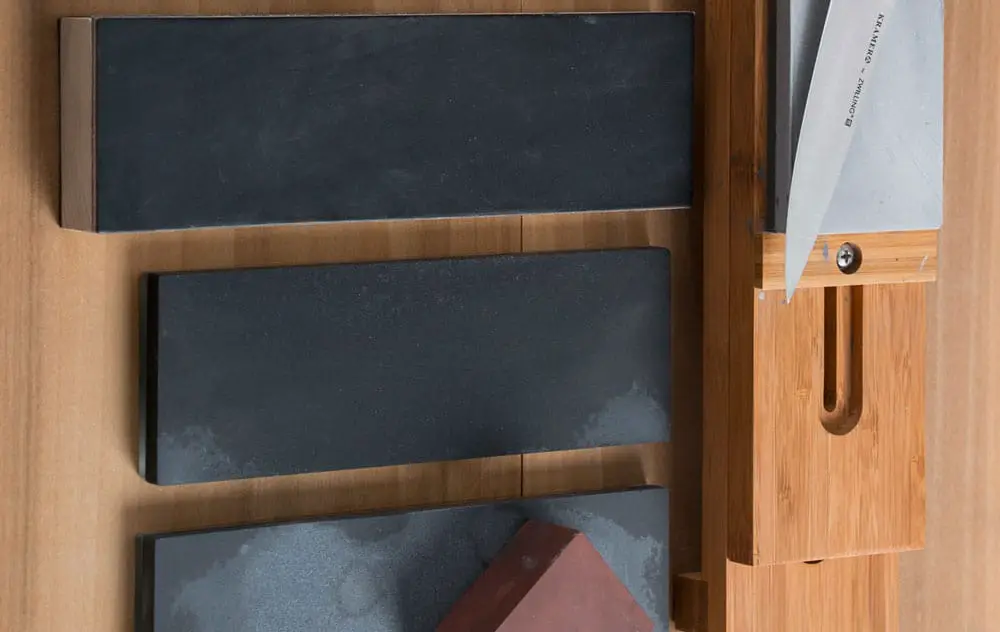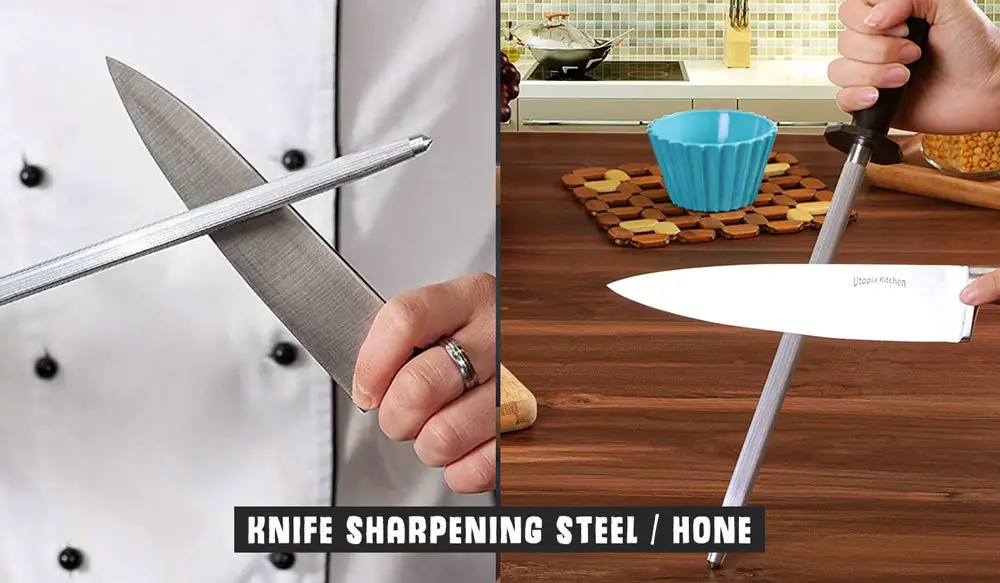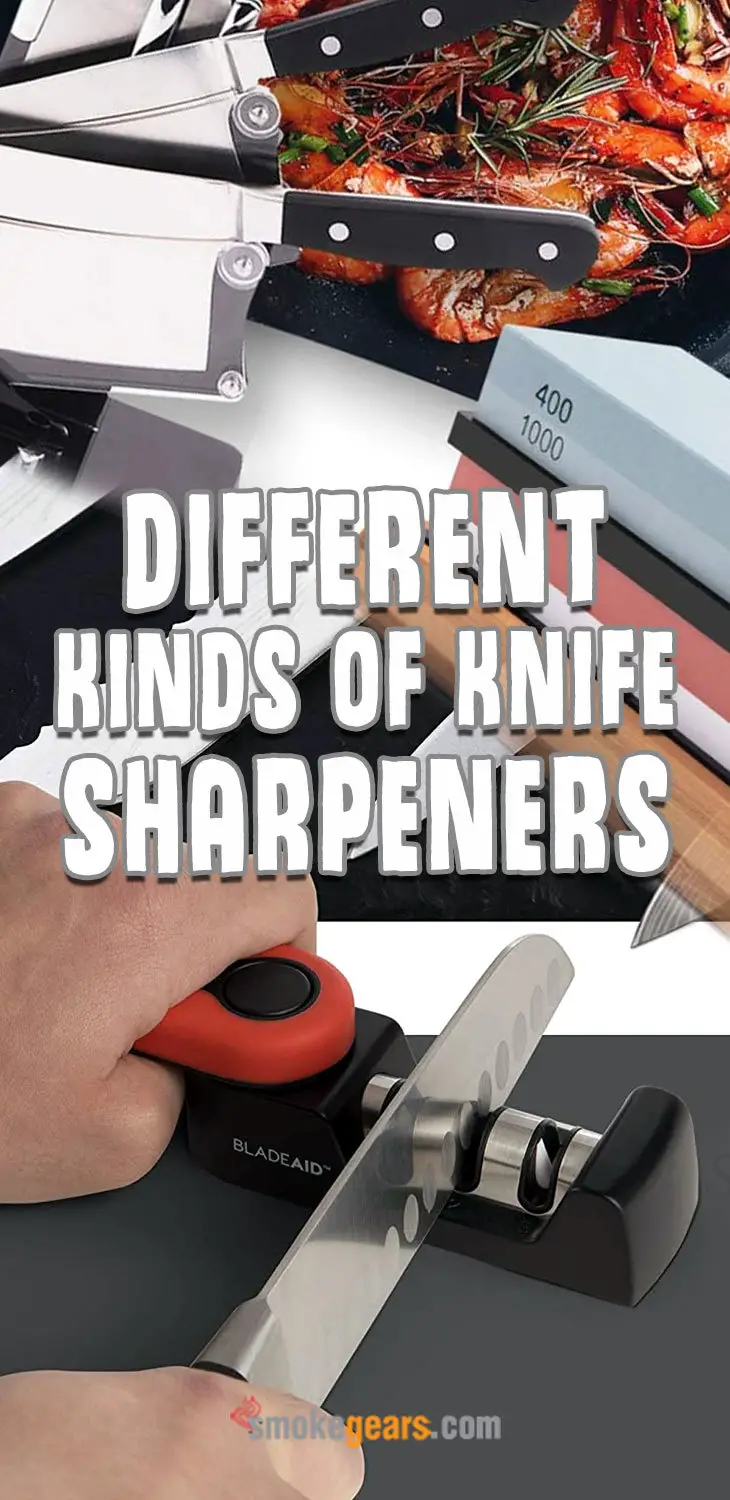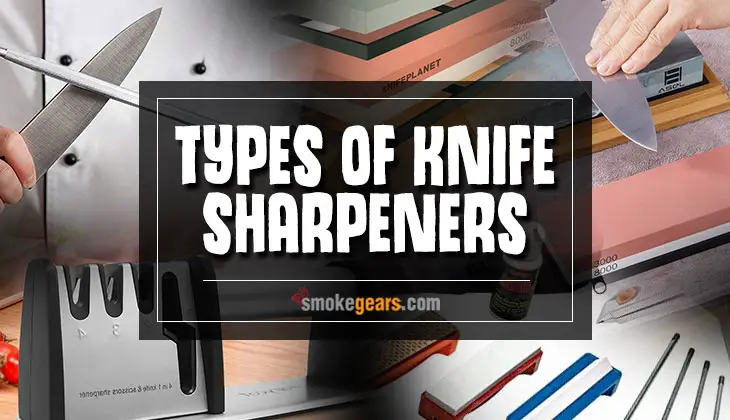Different Types of Knife Sharpeners Available on The Market to Improve Your Cutting
Anyone who's ever tried to be a make-shift butcher in their free time knows the importance of a good, sharp knife. Maybe you've had experiences where you go to cut a piece of meat and your blade barely scratches the meat! Regardless, having a good knife is pivotal when you want to barbecue. The problem, of course, is that the blade will eventually go dull. To extend the life of your blades, you'll need to invest in a good knife sharpener.
Now, if you ever worked in a restaurant before or an outdoors man you've seen a knife sharpener. They have little grooves that you drag your knife through to make it sharp. Simple, right? Well, you may be in for a surprise as there are different types of knife sharpeners on the market. They all sharpen knives, but each one goes about it in a different way.
More...
So let's look at the different kinds of knife sharpeners on the market so you can find the best one for you! This list is not ranked in any way, and is instead based on the amount of manual labor you'll need to use to get your blade sharp.
What are The Different Types of Knife Sharpeners Available on the Market?
There are five main different kinds of knife sharpeners: Stones, steels, manual, sharpening systems and electric sharpener.
Knife Sharpening Whetstones / Stone:

The first sharpener on our list, and more than likely the oldest. Ever since humanity discovered that some rocks can be used to make other rocks sharp, the foundation for the whetstone as we know it today began. As did the foundation for the barbecue, but we'll save that history lesson for another day.
Whetstones are not the same as some rock you found in your backyard of the bottom of the grill. They're specially designed for sharpening blades, and some modern whetstones have a finer side and a coarse side. Other times, the whetstone is to be used dry, or with water, or with oil. They're rather fiddly overall, but many chefs argue that the best results come from a whetstone.
And this is why whetstones are first on our list. They may be great, but the learning curve is steep. Unlike other knife sharpeners, you don't run the blade back-and-forth. Instead, the blade must be angled and moved with delicate strokes. This allows more control and precision, but also requires the skill to not ruin your knife. Due to the steep learning curve, whetstones are only recommended for those willing to take the time to learn.
Knife Sharpening Steel / Hone:

This isn't exactly the same as a whetstone, or really any knife sharpener on our list. The Knife hone is for honing knives, not sharpening them. What does honing do? Recall, for a moment, that what makes a blade so sharp is the very small edge and given how thin the edge is, the blade will be bent out of shape in a manner that you can't see. Sharpening a blade removes metal and makes the point finer, but doesn't straighten the blade.
By honing, you slide the blade of your knife along what's essentially a metal stick. Like a whetstone, this has to be done at a proper angle to get the correct results. The hone puts the blade back into place and while it doesn't sharpen your knife, it extends the life of the blade by reducing sharpening.
You likely have a hone and never used it, and really a hone should be as essential to your knife drawer as the sharpener. Especially if you plan on buying and using expensive knives.
Manual Handheld/ Pull-Through Sharpeners:
When you think of a knife sharpener, chances are you're thinking of one of these. The pull-through sharpeners are a staple of hardware stores, outdoor stores, along with kitchen and appliance stores. These handy sharpeners use angled stones which you either pull your knife through, or pull the sharpener through the blade. Ones you find in outdoor stores normally have a knife hone attached!
Pull-through sharpeners are easiest to learn and master, although they don't provide as much control and precision than a whetstone. Think of the whetstone as the sharpener for masters while the pull-through is for the everyday folks. As you should have learned by now from our website, simplicity doesn't always mean a product in inferior.
The benefit of a pull-through sharpener is they have no working parts and thus require no power, and are often small enough that storage isn't a hassle. They're easy to master, and great for keeping your knifes looking fine.
Knife Sharpening Systems :
The oddball when it comes to knife sharpeners. It's not quite an electric sharpener and it's no manual either. It's a hybrid system, and the word "hybrid" is rather appropriate given the normally bizarre design.
A clamp will hold the blade in place while you move the stone over the blade. Like whetstones and the hone, you’re moving the grinding stone at an angle and not straight back-and-forth.
The benefit of a knife sharpening system is you have much more control over the angles to which you sharpen your blade. The downside is that the device overall is rather clunky and takes some practice to learn how to use it. Not to mention it's more manual intense than the regular pull-through sharpener.
If you can get past the strange design, the knife sharpening system is a wonderful mix of a whetstone and a manual sharpener.

Electric Knife Sharpener:
The last sharpener on our list, and the simplest to use, is the electric knife sharpener. It functions similarly to the pull-through, but is powered and spins the grindstones as you drag the blade through. This ease of use comes at a price, however, as the control is nearly non-existent. You won't have a feel of which angle is best or which side needs more sharpening. Instead, your blade is just sharpened and that's that.
Electric knife sharpeners, however, are great devices to bring back even the dullest blades. Being simple to use, and having a low profile, you won't have much trouble storing them after you're finished sharpening your knives.
Those are the five, technically four, knife sharpeners on the market. You may be curious as to which one is the best, as we structured this list based on how manually intensive the action of sharpening the knife would be. In truth, we don't have an honest answer. You always want a hone, that's a given, but beyond that, it's up to you and your skill to determine which sharpener will work for your barbecue knives.
We do recommend buying the sharpener that you're sure to use. Even if you have to practice it, like a whetstone, or just plug it in and drag your blade across. Some chefs swear only by a whetstone and anything else is seen as blasphemous. Others don't mind using a combination, which we also highly recommend.



